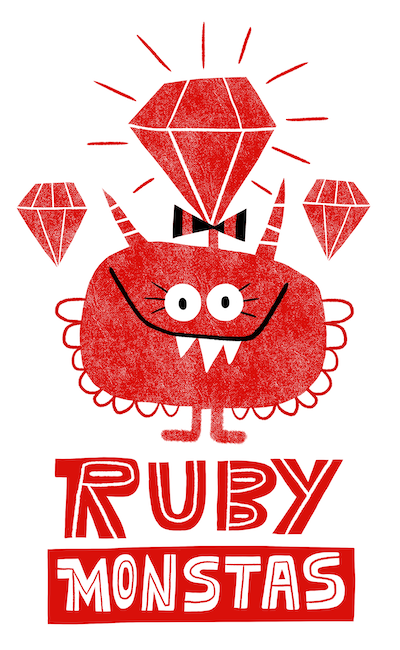Ruby Monstas
Introduction to JSON

JSON
JavaScript Object Notation
What is it?
JSON is
- a lightweight data-interchange format.
- easy for humans to read and write.
- easy for machines to parse and generate.
Source https://www.json.org/
Why JSON?
JSON is a text format that is completely programming language independent but uses conventions that are familiar to programmers of the C-family of languages, including C, C++, C#, Java, JavaScript, Perl, Python, and many others.
These properties make JSON an ideal data-interchange language.
Source https://www.json.org/
Example
This is an example of a JSON object
{
"name": "Matt Damon",
"bornInYear": 1970,
"academyAwards": null,
"appearsIn": ["Ocean's 11", "Invictus", "The Martian"]
}
JSON object / Ruby Hash
At first glance, a JSON object looks very similar to a Ruby Hash, but there are some major differences:
- JSON is just a text document.
- Keys are enclosed by "double quotes".
- Keys are written in camelCase.
- Empty values are described as
null
JSON is just a text document.
It's very crucial to understand, that JSON is just a text document.
With JSON itself we cannot do anything programmatically.
So, even if the syntax looks similar to a Ruby Hash, they're actually different.
Anyway, following slides describe some syntactic differences between a JSON object and a Ruby Hash.
Keys are enclosed by "double quotes".
|
JSON |
Ruby |
|---|---|
|
|
Keys are written in camelCase.
|
JSON |
Ruby |
|---|---|
|
|
null
vs nil
|
JSON |
Ruby |
|---|---|
|
|
nullin JSON and
nilin Ruby.
JSON is built on two basic structures
- A collection of name/value pairs.
- An ordered list of values.
Using these two structures we can describe any kind of data.
Source https://www.json.org/
A collection of name/value pairs.
|
JSON |
Ruby |
|---|---|
|
|
caretakers) or Objects (see
location) again.
An ordered list of values.
|
JSON |
Ruby |
|---|---|
|
|
An ordered list of values.
|
JSON |
Ruby |
|---|---|
|
|
Again, we can also nest Arrays and/or Objects within Arrays.
Additional Resources
What questions do you have?